
Wordplay: Jon Ingold
Joe Köller sat down with Jon Ingold of Inkle to discuss mechanical transparency and procedural prose.
Following our last issue I announced Wordplay, a new, infrequent column on text games and narrative. To start us of, I talked to Jon Ingold, creative director and one half of inkle studios, about his work and the advantages and challenges of working with text. Jon’s fantastic GDC talk on the same subject is available online and you can find him and inkle on Twitter.
Haywire: Let’s start with the retroactively obvious question: What is Sorcery!?
Jon Ingold: Sorcery! is an epic interactive fantasy adventure. Explore the wilderness of the Old World of Kahkabad, fight terrible monsters, cast powerful spells and avoid vicious traps. The game is told entirely through text, which adapts and rewrites itself based on your choices, to create a unique tale every time you play.
Adapted from the best-selling series of gamebooks by Steve Jackson, Sorcery! has been massively expanded into a living, breathing story-world. Meet every character and explore every turning. Shape your character through thousands of choices, every one of which is remembered.
Part 1 was released last May to critical acclaim, and Part 2 is out in the first week of November.
HW: Before we get back to that and your GDC talk, could you tell us how you ended up working with text?
JI: I always have, really. As a kid I read gamebooks, and played Infocom’s text adventures, because they were the only games that ran on our computer. When I began to learn programming, I wrote text adventures because they didn’t require any graphics, which were time-consuming, difficult and, of course, wouldn’t run on our computer either. Along the way, I got interested in writing – I’ve written a few novels, plays and short stories in my spare time – and the two interests, games and text, just kept on spiralling in and around each other.
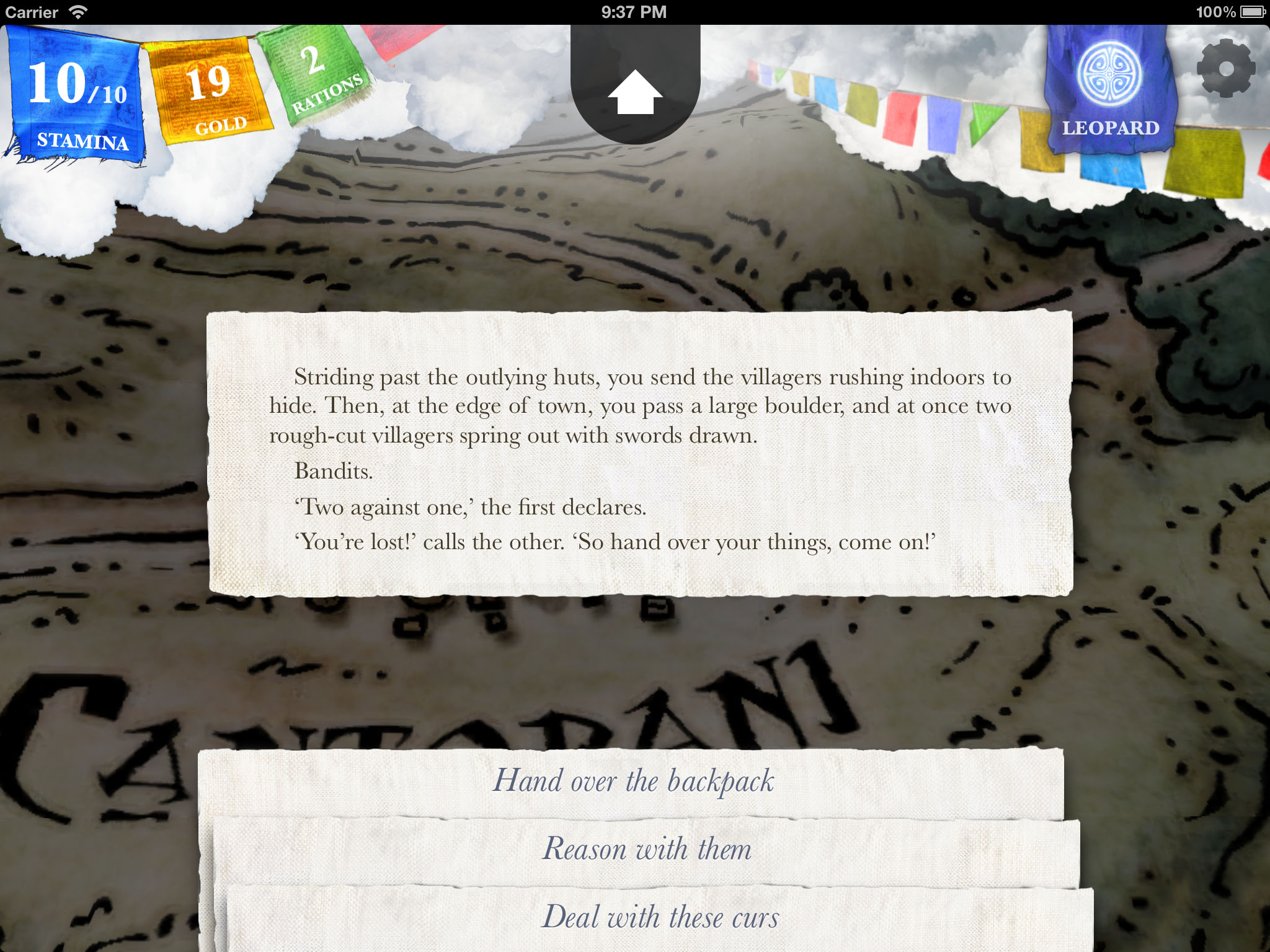 In my twenties, I discovered Inform, a modern language for creating text adventures, and began writing them in earnest and releasing them on the internet. The games I wrote did pretty well for themselves, getting a lot of players and a lot of discussion, and I won a few awards. Off the back of those games, I got a job at Playstation and started designing console games. At that point, I guess I thought I was done with text, but when Joe (ed: Joseph Humphrey, development director at inkle) and I started discussing leaving and starting inkle, the idea of making excellent text-based games was still around.
In my twenties, I discovered Inform, a modern language for creating text adventures, and began writing them in earnest and releasing them on the internet. The games I wrote did pretty well for themselves, getting a lot of players and a lot of discussion, and I won a few awards. Off the back of those games, I got a job at Playstation and started designing console games. At that point, I guess I thought I was done with text, but when Joe (ed: Joseph Humphrey, development director at inkle) and I started discussing leaving and starting inkle, the idea of making excellent text-based games was still around.
Now, my day job is writing interactive fiction, and I couldn’t really be much happier about that. There aren’t many people who get to turn their hobby into a career. I’m only hoping it’ll last!
HW: I think it’s interesting that you refer to your work both as text-based games and interactive fiction. Are they the same thing?
JI: Interactive fiction > text-based game.
To expand on that – text-based games are a way you could do interactive fiction. Inklewriter, for instance, doesn’t really produce text-based games, as there’s not really any game elements to it. Our Frankenstein project is interactive fiction, but not really a game.
But Sorcery! is a game, and a lot of the parser-based work I did in the past was game-like, usually containing puzzles and riddles and the like.
Recently, we’ve been finding that interactive fiction needs a game-loop or two to help the player understand what it is: straight-out interactive stories can feel a bit directionless and it’s not always clear where they’re going, or why the reader is giving their input. A few game-elements seem to help reassure readers that what they’re choosing is definitely being noticed by the game.
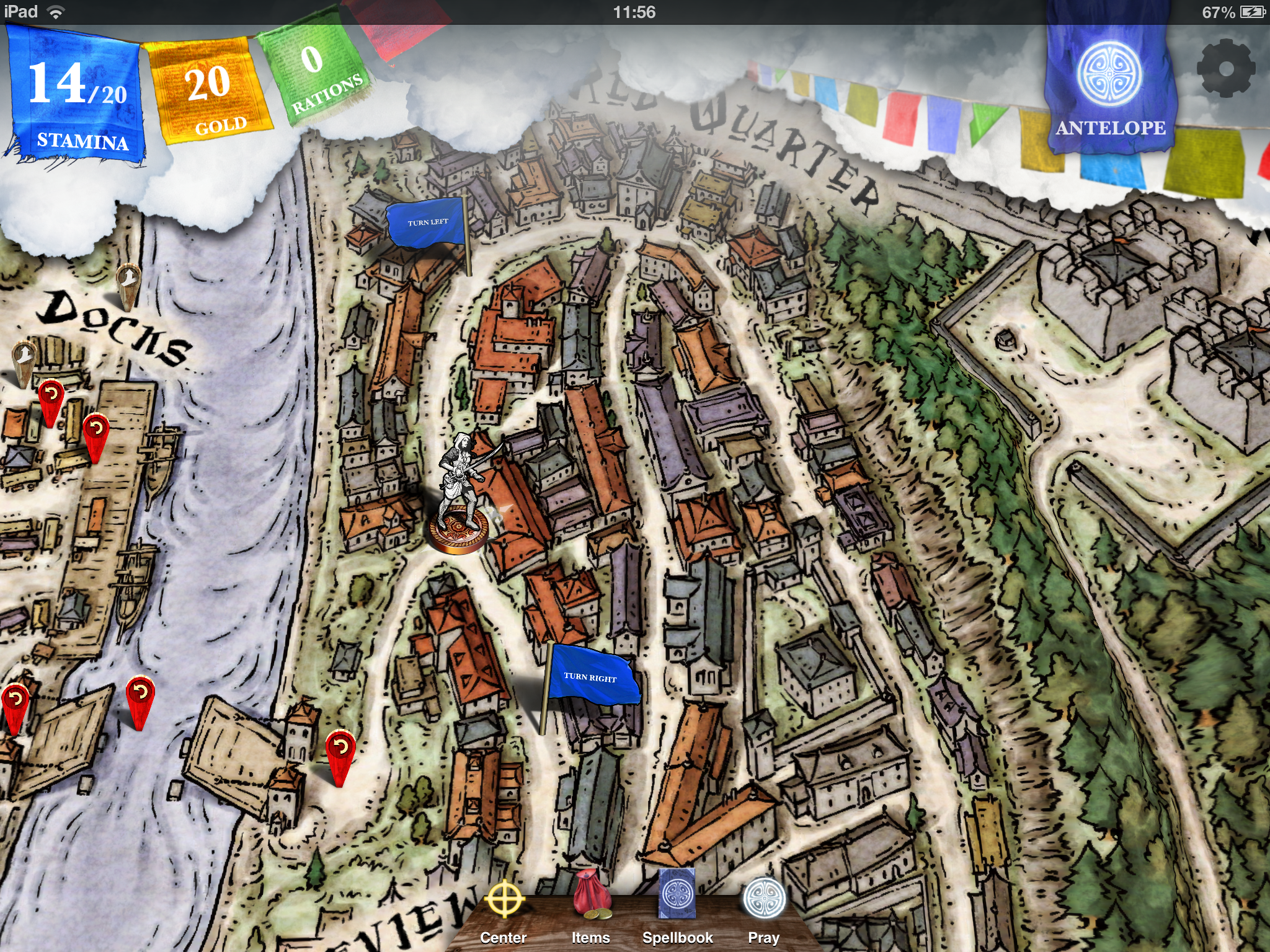 HW: You’re saying text-based games are a subcategory of interactive fiction?
HW: You’re saying text-based games are a subcategory of interactive fiction?
JI: Yeah, I’d say so. Heavy Rain is interactive fiction, after all.
On a side note, I really hate the word “interactive” – it doesn’t mean anything. Theatre is interactive. Reading is interactive, because there are words and I do a whole bunch of stuff in my head to work out what they’re telling, including imagining everything, drawing inferences, etc. I’d say the fiction in theatre is probably more interactive than the fiction in a game like Uncharted.
When we say “interactive” I think we really mean “responsive”, in that something about the fiction changes depending on what we do. But that doesn’t mean it has to be branching narrative; it could just be a story that evolves based on how we move through it. So, a good stealth game achieves this pretty well – the original Thief, for instance.
HW: I agree, games discourse tends to neglect how active participation in other media can be. Either way, it seems we are coming close to that old “game or not game” debate. Not to spend too much time on this, but what makes a game and what makes… eh… choice-based fiction?
JI: I think the game element arises from allowing a degree of strategy and prediction on the part of the player. It doesn’t need to be much! But some sense of a resource or a strategy one might have to husband.
To take an example, in Frankenstein, Dave Morris made the story track your empathy with Victor Frankenstein, and events branch based on that statistic. But the average reader doesn’t know that – the UI doesn’t tell you and the text is elliptical on the subject. People who read without knowing that treat the story as a story. But those who we happen to have told about the empathy mechanic bear it mind as they read, recognise it when it’s relevant – and tend to have a more interesting experience. Despite the actual text and interaction being identical.
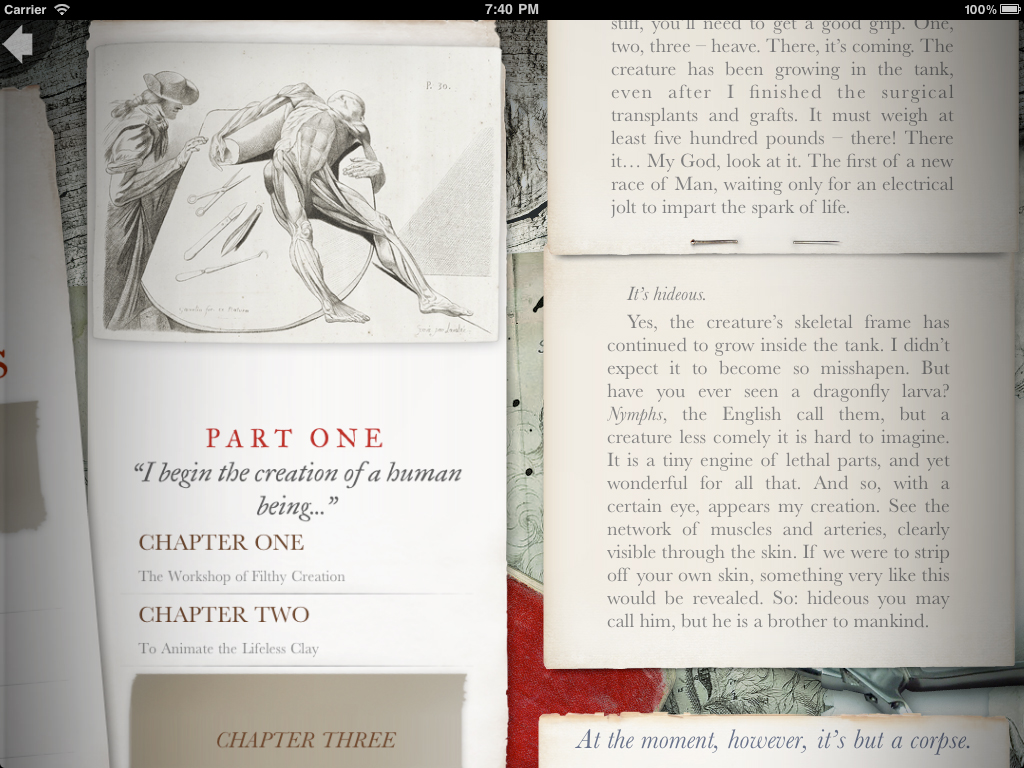 So I think the “game” element comes from giving the reader some kind of model for understanding what’s going on. Interestingly of course, films these days all have the same model – a 3-Act structure, with every scene containing a reversal – and that makes them easier to watch because we use our knowledge of the model to predict, at least a little, what’s going to happen, saving us from being too stressed or too surprised along the way.
So I think the “game” element comes from giving the reader some kind of model for understanding what’s going on. Interestingly of course, films these days all have the same model – a 3-Act structure, with every scene containing a reversal – and that makes them easier to watch because we use our knowledge of the model to predict, at least a little, what’s going to happen, saving us from being too stressed or too surprised along the way.
HW: You’re making it sound as if not the resource itself, but the idea of there being a resource brought about different attitudes – to identical content no less. If these systems don’t need to be visible to your players, do you need them at all or do you just need to convince people that you have one?
JI: Well, when a game is being played, the only human in the room is the player. So it’s what’s going on inside that person’s head which defines what the experience is.
Less existentially, it’s about suspension of disbelief. The reason to make systems visible is to enable players to believe that those system exist; and to help them suspend their disbelief that the choices we are making matter. When we play any game – board-game through to playground game – we know, really, that the game doesn’t really matter, that the rules are arbitrary and limited, that there are perfectly good avenues of action we could take if the game wasn’t preventing us. We have to suspend that disbelief, and trust in the game’s creators that we will get a worthwhile experience in return.
In a computer game, where there’s no-one around to encourage you to do that, the UI helps to make the game seem both responsive and fair. It may serve a strategic function for the player as well, or it may not.
 HW: Going back to what you said about providing a model for understanding events, I’m curious if you see this exclusively in mechanical terms. Leigh Alexander famously opined on empathy as challenge and normativity as a ruleset, launching that entire Formalists vs. Zinesters debate.
HW: Going back to what you said about providing a model for understanding events, I’m curious if you see this exclusively in mechanical terms. Leigh Alexander famously opined on empathy as challenge and normativity as a ruleset, launching that entire Formalists vs. Zinesters debate.
JI: I don’t know the debate, so can’t talk to that. But I think the point of a model is it doesn’t necessarily have to be rule-based, or mechanical, or even interactive, but it has to be somewhat predictive.
So my game-model might be “In this story, when you choose to act in a violent way, characters in the world will remember and respond to that choice appropriately”. You learn, after the first few swung punches, that people are avoiding you. Is that a mechanic? Well, no, not unless this is useful somehow. But does it create more empathy? I’m not sure. Possibly, yes.
I certainly do think that our tendency to express everything mechanically means empathy isn’t going to happen: once you start thinking of everything in terms of screw-threads and cogs, people become tools instead of humans (and this happens in the real world too; it’s how management consultants can fire hundreds of people and not feel bad about themselves). I suppose I think that if you make your mechanics more blurry and indistinct, then people will rely more on empathy and emotional intelligence to fill in the blanks – in the same way that, watching a film, I rely on my empathy to understand what the hell is going on, because a lot of the time all I’m shown is Tom Cruise’s face pulling a serious expression, and I have to work out what it’s supposed to mean for myself.
HW: I probably should have warned you that I have a penchant for Twine games. Or Twine fiction, if you prefer.
JI: I’ve got nothing against it, but it hasn’t grabbed me yet. I tend to find I’m floating in a big sea of stuff, some of which hits, some of which misses, but none of which escalates or connects together to create a larger whole. That said, the amount of Twine-type stories I’ve tried is pretty small, and I’m sure a canny author could use the format to make something compelling. They probably have, and I just haven’t seen it.
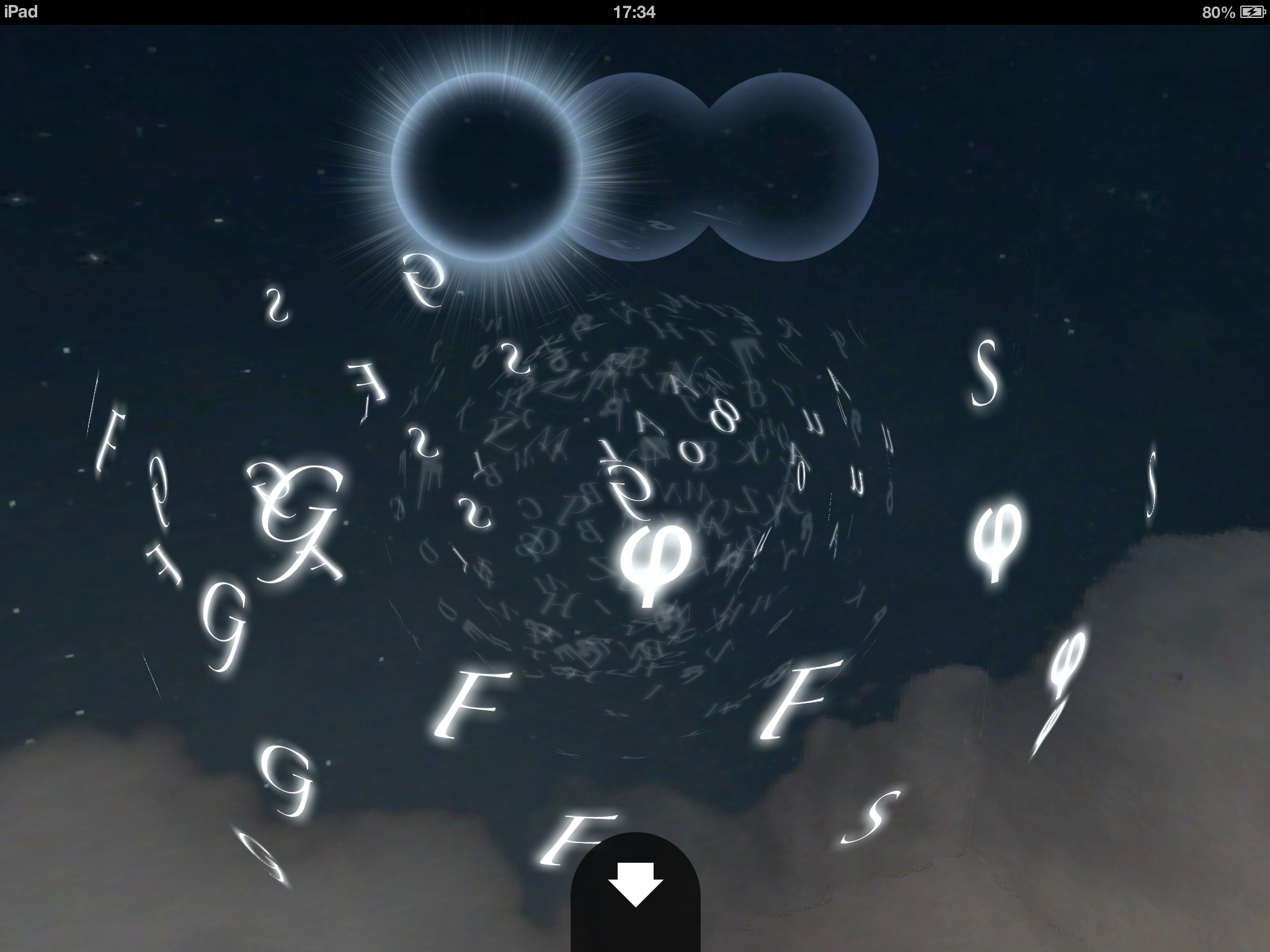 HW: Just by bringing it up, I already devoted more time to the debate than I meant to anyway.
HW: Just by bringing it up, I already devoted more time to the debate than I meant to anyway.
Perhaps we can talk about other parts of your design: At GDC, you talked about the simplicity and flexibility of text, the benefits of painting with words instead of polygons. Given this, I did not expect you to cover visual design as well. How important is it to make prose pretty?
JI: The answer is, I’m really not sure. I do know that the reason people stop and read the text in our apps is because the visual design is attractive; but it’s also because the interface is easy to use, quickly rewarding and, whatever you do, it’s always really easy to take the next step in the story.
In Frankenstein, which wasn’t written by us, but was the first time we used our engine and interface design, the pages of text were quite long. We found that just that – having three or four paragraphs to read before the next choice came along – caused a significant tail-off in people’s interest in reading. So for Sorcery! we broke everything up into ruthlessly short chunks, and you can see the effect on people playing. They read without meaning to.
So is that visual design? I think it probably is. It’s the same as the way writers for magazines work, ensuring everything they print is highly consumable. You’d sort of be crazy not to do that, since computers – especially phones and tablets – are so damn distracting. You make the reading too much like hard work, and you’ll have a thousand players checking Twitter instead.
The other side is beautiful visual design is important to us as a company – for Joe, because it’s what he does really, really well, and for me, because it’s something I do really, really badly. So it’s a real pleasure to be able to work on stuff that ends up looking so good!
But yeah. Text is a visual medium. I hadn’t thought of that idea until I came to write my GDC talk, but having struck on it, it seems obviously true. Same reason I break long emails into paragraphs – you’d never read them if I didn’t.
 HW: I would, but it would make my job harder.
HW: I would, but it would make my job harder.
The idea seems obvious enough – most good text games practice this kind of restraint, by intuiton or design – but I think it’s the first time I heard it spelled out. How did you go about testing player attention?
We didn’t do any formal testing; more just tried things and followed what we liked. Between Frankenstein and Sorcery! we wrote a piece of our own based on a parser game I wrote in 2001, and that adaptation was fascinating to do, because it took us miles away from the gamebook, text-heavy format. So when Sorcery! came around, we had a sense of which way to jump.
HW: And now for something completely different: What directions are you planning to take the format in the future?
There’s lots of interesting things out there. But we’re interested right now in blending games and game structures with text in ways that bring the games to life. So in Sorcery! 2 we have an almost open-world-ish structure, where you can roam around this city, looping back on yourself and exploring very thoroughly, but what you find is individual bits of real stories, different, unique characters, and no repetition of content simply to fill out the world. So we’re trying to do the exploration you get in a game like Assassin’s Creed but using text to make it full of characters and not cut-outs.
At the same time, we’ve added a gambling mechanic – a dice-based betting game – but while that game plays, the two characters talk. What they say and what they play are inextricably linked, so the experience is a little frustrating – you can’t just say anything! – but in a good way. It’s more interesting than playing a straight gambling game because it has character; and as a player, I find myself taking risks because I want to string the conversation out, which is a great source of tension.
For future projects, we’re looking along that axis, at different types of games that we can bring to life and bring character to, using the power of text and our combination of procedural and authored content. We’ve got some interesting ideas for new projects and for Sorcery! 3. But it’s hard to be specific yet, as any given concept may prove to be impossible. We thought the procedurally-generated combat sequences in Sorcery! 1 would be impossible, but in the end, they worked out pretty well.
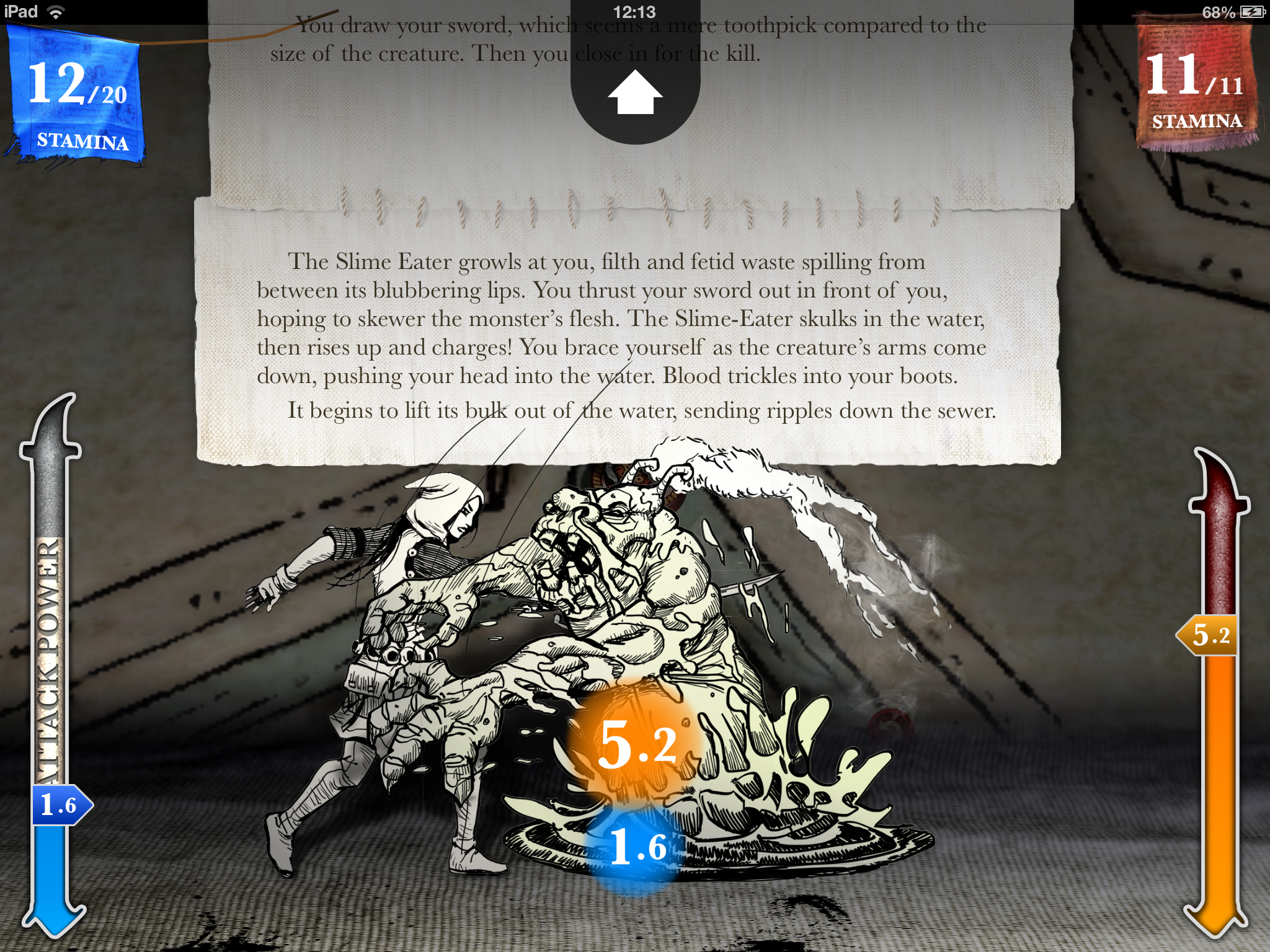 HW: That sounds really cool. The impression I get (and got from your talk) was that you’re using visual minimalism to layer on depth and detail in other areas. Hyperrealism of a different kind.
HW: That sounds really cool. The impression I get (and got from your talk) was that you’re using visual minimalism to layer on depth and detail in other areas. Hyperrealism of a different kind.
Speaking of procedural generation though, could you elaborate on how you employ it? Easing up on notions of authorial intent is kind of essential to making a game, a system in which people can play around, but I get the impression that automatization or randomization is still seen more critically in this area than in world generation, say.
JI: Yeah, I’ve never seen any procedural text that’s really worked, outside of one place, and that’s the some of the parser-game works of Andrew Plotkin. In particular, his game Hunter, in Darkness has a (near-)infinite maze of rooms, which is entirely procedurally described. It becomes clear after a while but to begin with, it’s not at all clear that it’s doing that.
That game inspired me to try my hand, and then at about the same time, I was given a modded version of the Inform text-game compiler which allowed easy writing of sequences and cycles of text – so you could write one response, that would print differently depending on how many times the text appeared. Those two ideas – procedurally driving what gets constructed, and then supplying varying text output for repeated actions – came together in my head, and I used both techniques a lot in my last parser-game, Make It Good – and used them in all sorts of stupid places, from generating dialogue, to generating a series of backyards behind houses that you could wander through for no reason.
When we came to doing Sorcery! we pitched the idea of procedurally generating the fight scenes almost as a blue-sky concept, we didn’t know if we’d be able to do it well enough to ship the feature. But I’ve always had this nagging feeling that writers writing fight scenes in pulp novels are basically generating random text from a set of familiar-sounding sentences they have in their heads, so it seemed a plausible thing for a computer to do.
When it comes down to it, of course, the text is still very heavily authored. What the system really relies on is that descriptions of combat contain a lot of non-sequiturs. A line describing what I do doesn’t really need to flow into a line describing what they do in response beyond a few obvious things, like not repeating the same words and having the right punctuation. So at its most basic, you can stack text descriptions together and make a punchy, descriptive paragraph.
Then we layer some more authored sentences on top, which come out under certain circumstances. We make sure the various patterns the database uses vary too, so you don’t get sentences of the same syntactic structure over and over, which would quickly become obvious. And then we test a lot to iron out the kinks.
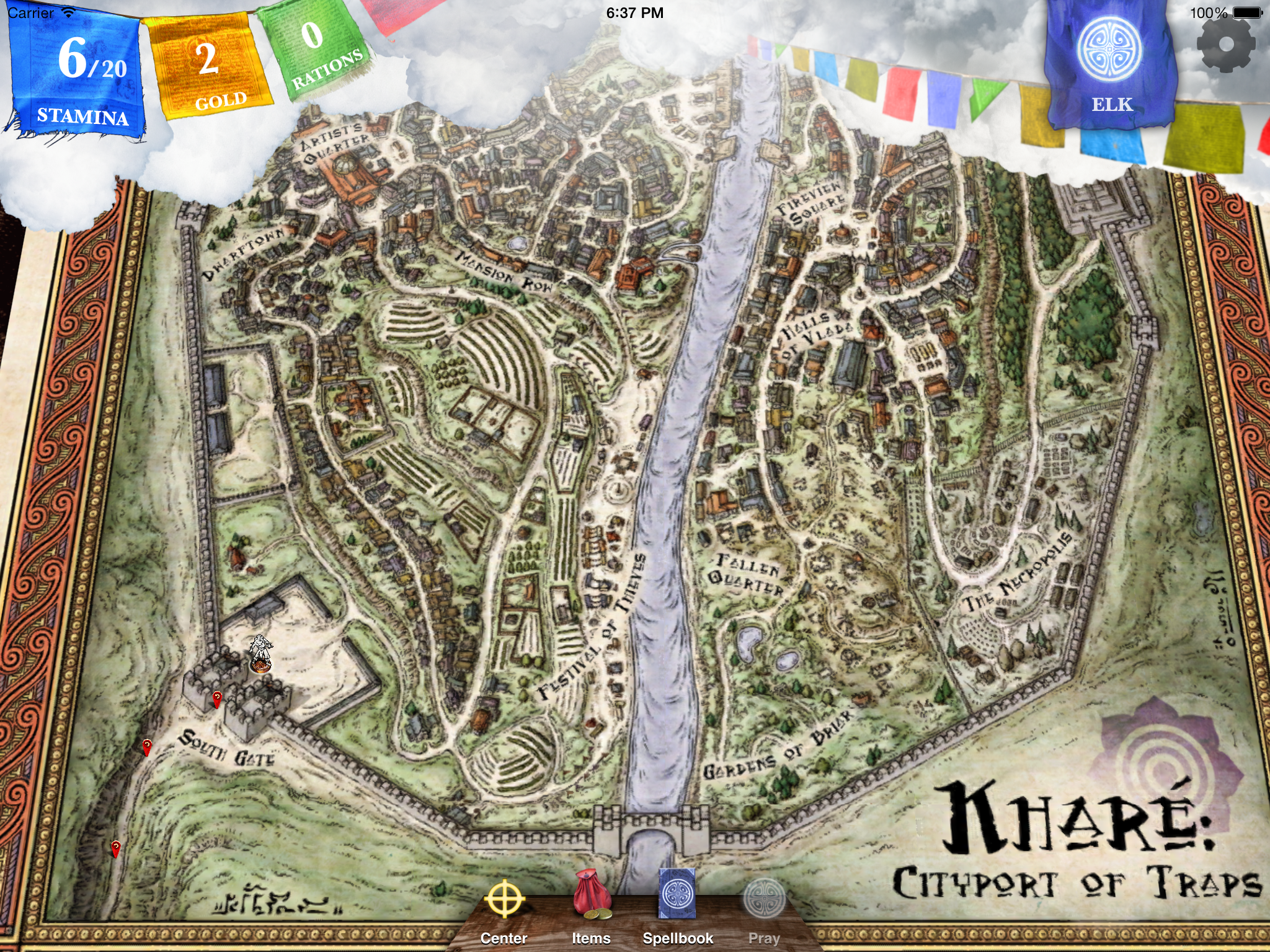 In the main game flow, Sorcery! Part 1 didn’t have many procedural sequences, but Part 2 has quite a few more as the story goes along, and it’s a similar process to the combat.
In the main game flow, Sorcery! Part 1 didn’t have many procedural sequences, but Part 2 has quite a few more as the story goes along, and it’s a similar process to the combat.
In general, I think the reason people haven’t done this before isn’t because it doesn’t work, but because there’s an assumption that text has to be fixed, locked down and closely copy-edited. We treat text quite differently, throwing words around with abandon, and allowing algorithms to sort out the conjunctions and the punctuation of the sentences we create. And we do a lot of work to ensure we avoid repetition of phrases and words (and still, a lot slips through). The result is never outstanding prose, but it’s perfectly serviceable, and buried in amongst other prose, it’s pretty hard to spot.
So I think no-one else really pushed it far enough. People dabbled in it, tried things which were either too tightly authored to do anything interesting, or things which were so fundamentally algorithmic that when the system started generating weird text there wasn’t any way to fix it. What lets us do better is that we have a good tool that allows the author to tweak and fix what they like, writing variations quickly, and the rules of the system are really simple – even if the final text file isn’t.
HW: Speaking of combat, do you have any plans to abandon the fantasy genre again?
JI: Yes, definitely. Fantasy is a lot of fun, and the world of Sorcery! is gloriously malicious, always out to trip you up or send you down a wrong turn. But it doesn’t appeal to everyone and I don’t want the work we do to get pigeonholed as just nostalgic Dungeons and Dragons affairs. We’ve got a new idea brewing that’s different again, still lots of fun, but appealing to a different crowd.
I’d still like to stick with genre fiction for the moment, though, I think. I want to do murder mysteries, sci-fi adventures, steampunk, maybe a rom-com. I don’t really want to tackle serious, heavy-weight issues. No reason for that – it can certainly be done – but I guess I’m attracted to making entertainment that occasionally achieves the status of art, rather than art than is occasionally entertaining.
HW: So what’s next for inkle? Can you talk a bit about what you’re working on right now?
JI: Well, we’ve just finished up Sorcery! 2 and are into final spit-and-polish testing for release on November 7th. It’s playable as a stand-alone adventure, or you can continue from where you left off in Book 1. Once that’s shipped, it’s Sorcery! 3 for me, while Joe goes off and does some R&D for another thing we’re getting into, which we can’t talk about yet, but is pretty awesome.
So, um, no, we can’t. But we will.